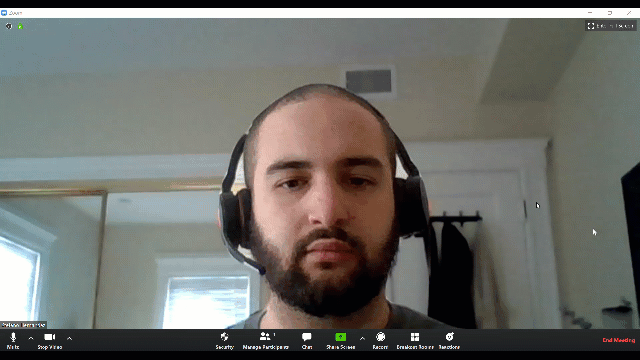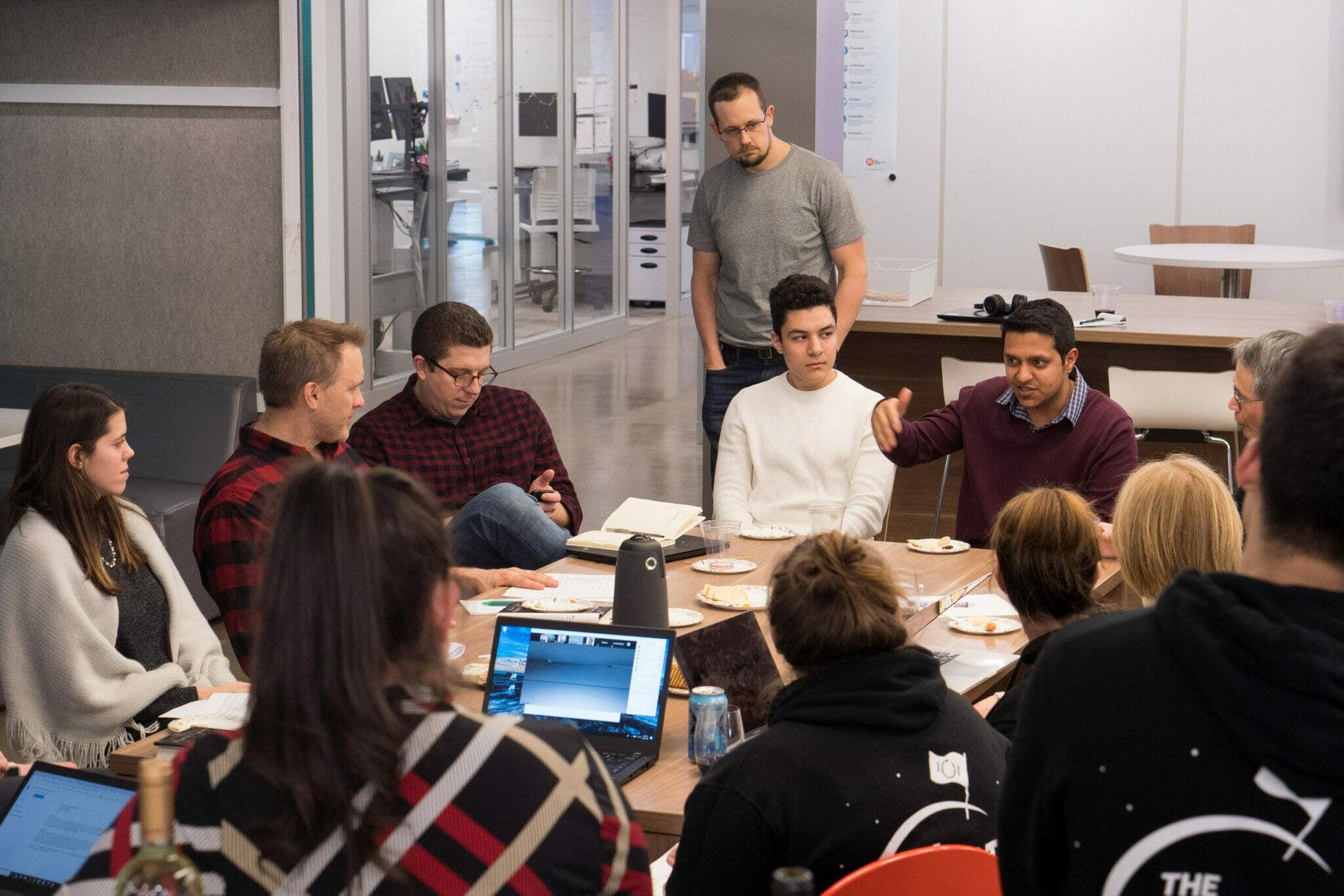Every major crisis in modern American history has forced dramatic societal change, and COVID-19 is no different.
World Wars prompted overdue progress on the suffrage front, while 9/11 led us to reconfigure homeland security and the way we travel. The coronavirus pandemic and accompanying social distancing measures are forcing countries, states, and cities everywhere to reimagine how they live and work.
A functional hybrid workplace—one that caters to people in an office, at home, and everywhere in between—isn’t some abstract future goal. It’s a competitive necessity right now, and will be a hallmark of resilient organizations over the next half-decade. Companies that embrace the virtual workforce transition and make it part of their long-term culture will be at an advantage—now and well after physical offices reopen.
To set yourself up for success, you’ll need to prioritize:
- Completing any logistical transitions
- Inspiring buy-in from virtual teams moving forward
- Positioning yourself to compete in the virtual job market
- Focusing on candidate fit for the future
Call it whatever you want: the new normal; distanced business; the post-COVID world. There’s no denying that being able to operate with virtual teams will be essential to mobility in 2020 and beyond. It will speak to your agility, but also your credibility. The myth that virtual teams are less productive is already being disproved. Companies that can’t support a remote workforce or try to return all their people to cubicles could come off obtuse and out of touch, risking outright obsolescence.
Join 10,000 companies solving the most complex people problems with PI.
Hire the right people, inspire their best work, design dream teams, and sustain engagement for the long haul.
Completing logistical transitions
Let’s start with where you are and where you need to be. Currently, your workforce is operating either fully or partially remote, depending on your industry and the nature of the work. In getting there, your business had to consider the logistics of things like:
- Video conferencing for virtual meetings
- Tech support from remote locations
- Cloud capabilities and migrations of proprietary information
- Replacing in-person business and events
- Terms of agreement for physical spaces (i.e., office leases)
But the solutions you’ve come up with may only be viable in the interim. Transitioning your company for the future means ensuring those logistics are scalable and sustainable. Whether you’re weeks or months from moving into the next phase of your business transition, you need to be asking questions like:
- Do we have enough personal video conferencing licenses?
- Have we purged all extraneous accounts and expenditures?
- Have we migrated and secured all our essential data and information?
- Do we have contingency plans in place for future meetings and events?
- Is our physical space still efficient?
If the answer to any of the above remains “no” or “not really,” that’s where your priorities ought to lie. Cloud migration services are in especially high demand, and if you’re in a heavily regulated industry like financial services, you know why. On-prem infrastructure can become particularly unwieldy in times of crisis.
If you relied on in-person networking, you’ve gotten creative, leveraging webinars and virtual workshops, and educating newly remote teams on how to still engage customers. These should be staples of your development program moving forward so you can still see the benefits of employee engagement.
Perhaps in sending your teams home indefinitely, you stumbled into cost savings by amending your office lease(s). As you envision the post-pandemic path forward, suddenly a smaller office or co-working space looks pretty appealing.
Services facilitating a remote workforce are plentiful, but as a business you need to determine which demands come first. You may need to streamline the number of vendors or licenses you lean on, balancing cost efficiency with the number of people who will ultimately return to an office. Maybe that means Slack and Dropbox are non-negotiable, but some of your more robust reporting tools are luxuries.

Inspiring buy-in from virtual teams moving forward
The good news is that the hardest part has passed. You’ve focused on enablement and remote team building activities, and you’ve learned how different personalities adjust. None of this has been easy, and you should commend yourself and your organization just for figuring it out.
You’ve also learned a thing or two about the structure of your org—as it currently stands and how it ought to be going forward. In addition to getting a sense of how communications and schedules shift, maybe you’ve re-assessed goals, strategy, and the work to be done. If not, consider a team alignment session to get everyone on the same page. These insights will be invaluable in the next phase, when it’s unlikely you’ll be able to return to your full in-office operational capacity.
Continue this assessment by asking:
- What work is still best done in a physical office?
- Who can operate in a hybrid remote capacity?
- Which work can be done fully remotely?
Consider also how the behavioral profiles of your people might be conducive to full-time remote work going forward. Maybe the people best suited for autonomous virtual work weren’t handling those tasks before—that’s okay. Behavioral fit is pivotal throughout this process. Ask a high-dominance employee to lead a remote project, for example, even if it might be outside their typical purview.
As your team settles into the next phase of this transition, having steady leadership and an adaptable remote workforce will foster the sort of agility you need to sustain. In the event of another wave of social distancing mandates (or other crisis), your pivot back to remote work will be that much smoother.
Positioning yourself to compete in the virtual job market
Stabilizing your business is the focus right now, and probably for the foreseeable couple quarters. But at some point, you’ll begin thinking again about growth and hiring.
During this downturn, you’ve probably had to reconsider organizational design, meaning certain positions no longer exist or have been modified to align with revised goals and strategies. Your more flexible employees may have taken more readily to these transitions, especially if they were already accustomed to working remotely.
But a productive virtual workplace is as much about behavioral makeup as it is skill or experience. One 2018 study estimated more than half of the global workforce was already operating remotely at least once a week. That figure has ballooned in the months we’ve all been confined to our homes, which is important to consider once your team’s back in growth mode.
More than 20 million Americans lost their jobs in April, the low point of the worst economic downturn since the Great Depression. Some industries are able to hire now, but most are merely aiming to sustain. When things do eventually turn, there will be no shortage of candidates.
So how, as a company emerging from a transcendent economic crisis, do you gauge available talent? What will hiring even look like in this so-called new normal?
Credibility with the virtual workforce won’t just be about public perception—though that’s certainly a factor. In addition to looking out of touch, if you don’t have remote work infrastructure in place post-COVID, candidates may question your viability: Is that model actually efficient? Do you have a buffer in the event of another downturn?
Focusing on fit for the future
One way to sift through a sea of resumes is to focus on rebalancing teams. Maybe you consider remote work experience mandatory, where it would have been a nice plus in the past. To narrow it down further, you prioritize people who can fit into your now-established virtual workforce culture while bolstering the team they’re joining.
Don’t feel pressured to make a quick decision. Rather, consider your position an advantage of opportunity; you can take the time to make the right hire based on the type of person you need for an open role. This approach will pay off in the long run.
With the systems, culture and experience in place to support a virtual workforce, you can once again move tactically: Replenish your sales ranks with an extraverted personality; add a dynamic recruiter to a downsized talent-acquisition team.
It won’t be business as usual, but by embracing the virtual workforce transition as a given—not some temporary inconvenience—your business will be more agile, more resourceful, and more attractive to candidates once the pipelines have re-opened.
Enabling virtual teams will no longer be a controversial notion. Prior to COVID-19, there remained a certain stigma within some industries or companies—reservations as to whether remote workers could be as productive.
The pandemic has changed everything. Virtual teams are no longer a neat aspect of progressive operations. They’re essential to growth in a post-COVID environment.









